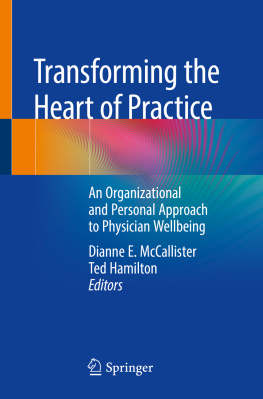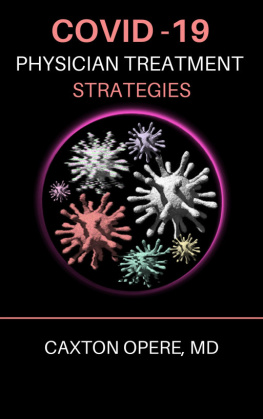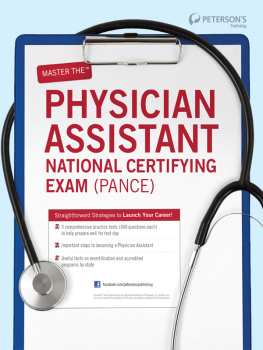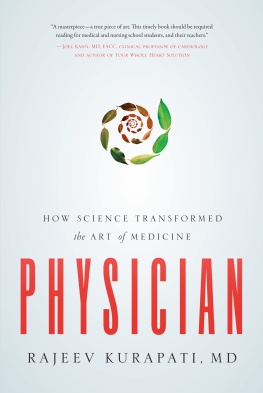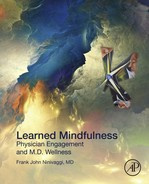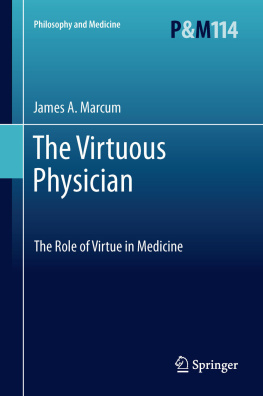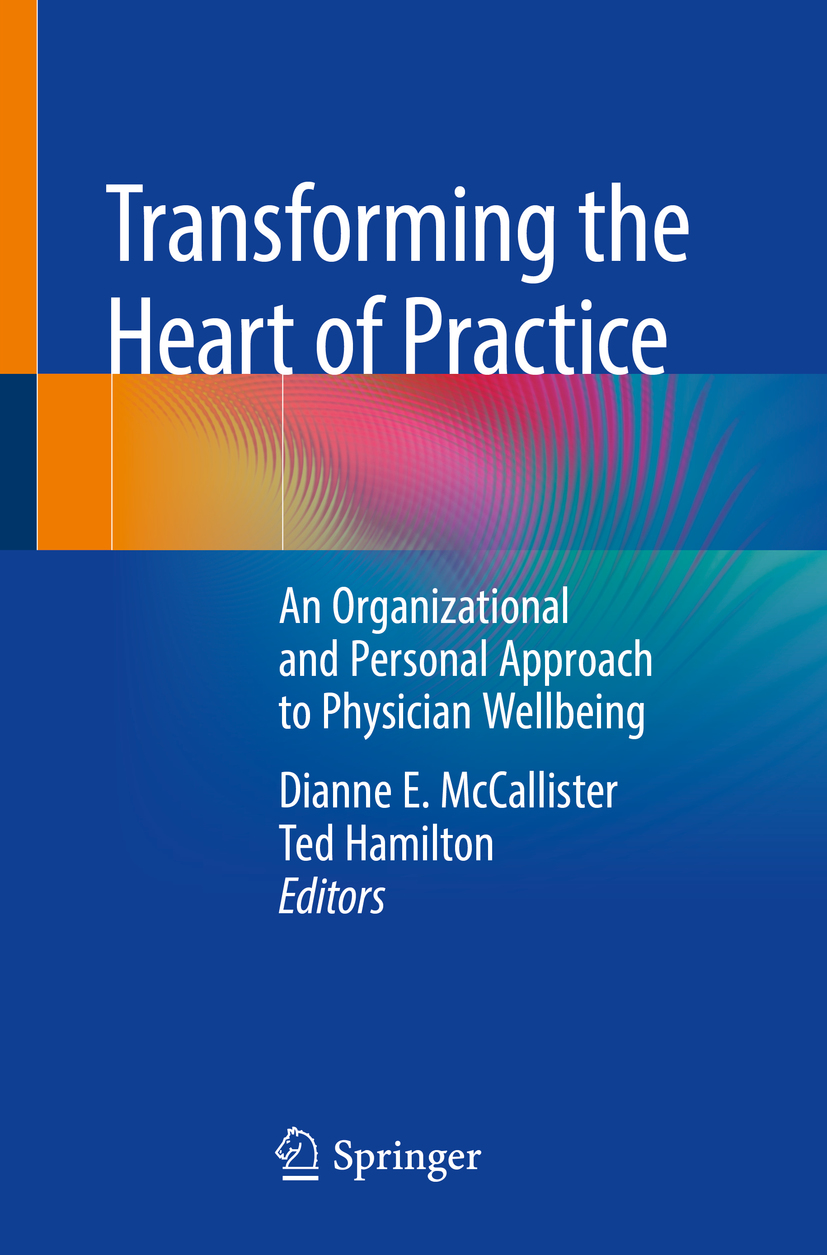Editors
Dianne E. McCallister
The Medical Center of Aurora and Spalding Rehabilitation Hospitals, Administration, Aurora, CO, USA
Ted Hamilton
AdventHealth, Mission & Ministry, Altamonte Springs, FL, USA
ISBN 978-3-030-15249-9 e-ISBN 978-3-030-15250-5
https://doi.org/10.1007/978-3-030-15250-5
Springer Nature Switzerland AG 2019
This work is subject to copyright. All rights are reserved by the Publisher, whether the whole or part of the material is concerned, specifically the rights of translation, reprinting, reuse of illustrations, recitation, broadcasting, reproduction on microfilms or in any other physical way, and transmission or information storage and retrieval, electronic adaptation, computer software, or by similar or dissimilar methodology now known or hereafter developed.
The use of general descriptive names, registered names, trademarks, service marks, etc. in this publication does not imply, even in the absence of a specific statement, that such names are exempt from the relevant protective laws and regulations and therefore free for general use.
The publisher, the authors, and the editors are safe to assume that the advice and information in this book are believed to be true and accurate at the date of publication. Neither the publisher nor the authors or the editors give a warranty, expressed or implied, with respect to the material contained herein or for any errors or omissions that may have been made. The publisher remains neutral with regard to jurisdictional claims in published maps and institutional affiliations.
This Springer imprint is published by the registered company Springer Nature Switzerland AG
The registered company address is: Gewerbestrasse 11, 6330 Cham, Switzerland
Preface
We know that we are facing a critically important issue in professional burnout.
We care deeply for our patients and for our dedicated physicians and providers.
We dare to speak up about the issue and work diligently to find solutions.
We share what weve learned and what weve discovered to promote well-being.
We are the Coalition for Physician Well-Being, and this book is what we are about. We are not newcomers to the arena of physician dissatisfaction and dysfunction. We have been aware of, and working diligently to understand and address, the complex condition of physician burnout for well over a decade, long before it became widely known and popularized in the professional and mainstream press.
This book, Transforming the Heart of Practice: An Organizational and Personal Approach to Physician Wellbeing , is the culmination of 18 months of writing, editing, organizing, and preparing for publication a collection of essays exploring the issue of burnout from front to back, upside down, and inside out. Over 20 chapter authors have contributed to this volume, including physicians, psychologists, researchers, healthcare administrators, chaplains, professional coaches, and counselors. Some have experienced the desolation of professional burnout and have recovered to share their experience about the road to recovery and resilience. Some have spent a considerable portion of their careers in preventing burnout and promoting physician wellness. Some have done meticulous research to enhance our understanding of the issue and validate potential solutions. Some have ventured to work with physicians to make a difference, personally and organizationally. All are committed to contributing to the good of the discipline, collaborating in research, sharing best practices, growing the body, and encouraging each other in our support of balance and meaningin pursuit of wholeness for physicians.
Part I of the book is intended to establish context, to provide a brief overview of the phenomenon of physician burnout, to establish its validity, and to make a case for the reason it has emerged as a critical issue in American healthcare. The opening chapter describes societal trends influencing a radical transformation in the healthcare industry. It elucidates the impact of burnout on the practice of medicine and upon individual physicians and providers, making a case for a concerted, collaborative effort on the part of involved organizations and affected individuals to address the issue. The following chapter consists of a basic summary and analysis of existing research on professional burnout, cogently describing it as being in its theoretical infancy, calling for a more precise definition of burnout, and emphasizing research initiatives designed for practical application. It then illuminates the downside impact of burnout on quality of patient care, staff morale, turnover, and organizational financial performance. The third article lays out why anyone who cares about healthcare should be concerned about this issue.
Part II provides a rationale for healthcare institutions (hospitals, physician groups, medical associations) to make a commitment to physician wholeness. We explore physician accountability and its role in monitoring physician clinical and professional performance, and we emphasize the necessity for mutual respect and trust in building a collaborative team of caregivers.
In Part III, we get down to brass tacks. We begin by addressing in a concise, step-by-step manner the persistent dilemmaWhat are we going to do about it? How do we get started? What is the first step? Who should be involved? Where do we go from here? We then take on the various elements of this How to curriculum, providing additional detail and personal experience direct from the frontlines of combatting burnout. Physicians are trained to be tough, independent, and resourceful. They are prone to ignore or deny their own needs for downtime, rest, recovery, and relationships, and they often fail to acknowledge personal signs and symptoms of burnout, depression, and social dysfunction.
Part IV focuses on developing and sustaining a healthy professional culture that is aligned with the mission of the organization. Essential elements of enculturation include understanding how medical education and training have formed physician attitudes and behaviors, how to help physicians and providers understand and accommodate organizational culture and mission, and how to incorporate intentional on-boarding and address what some might term the soft stuff of physician well-being. If the hard stuff might be defined as reengineering of the clinical workplace, or reprogramming the electronic health record to be more efficient and user-friendly, or organizing fully functional, collaborative clinical teams, then the content of these essays clearly belongs in the arena of soft stuffmindfulness, collegiality, spirituality, and wholeness (biopsychosocial-spiritual health). But the old truismthe soft stuff is the hard stuffapplies here. The importance of this soft stuff to physician well-being cannot be overstated, and it is anything but easy to address. Initiatives designed to promote collegiality and living in the moment, along with developing sensitivity, and providing access to personal and emotional resources are highlighted here. We share examples of several well-designed, functioning programs where these principles are being incorporated into practice.

